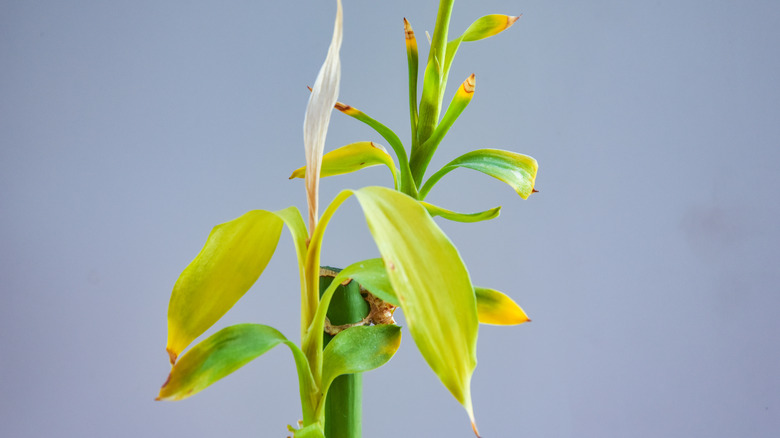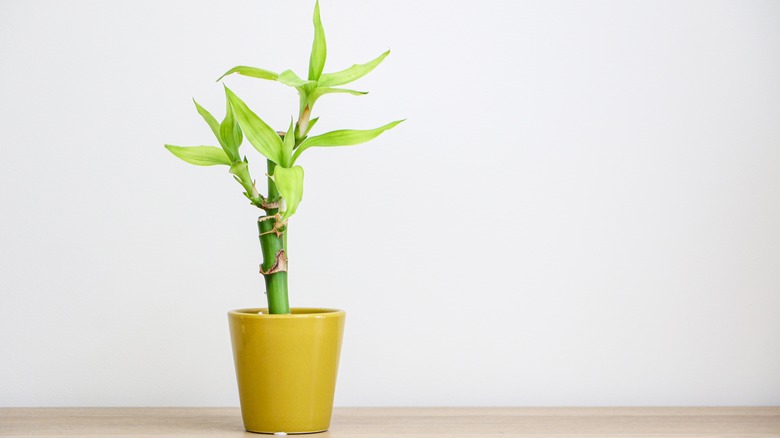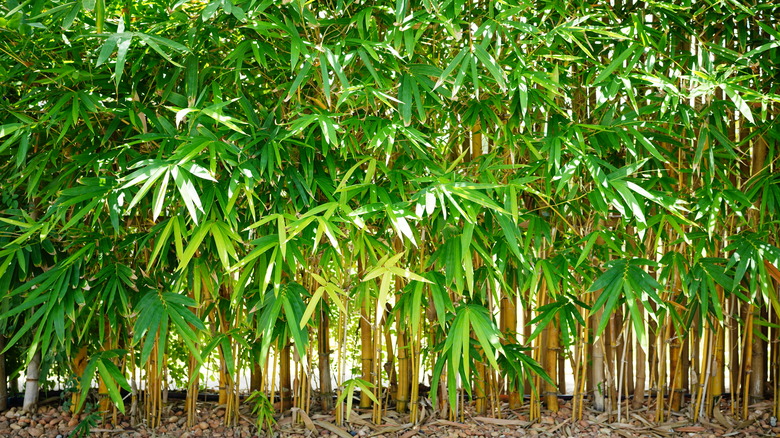Why Your Bamboo Plants Are Turning Yellow (And The Simplest Way To Fix It)
When your beautiful bamboo plants turn yellow, it is often an indication of distress that could be a result of a variety of factors. Yellowing in the leaves and stems can occur whether your bamboo is kept inside or planted in your yard. Luckily, there is usually a simple way to restore your plant. Sunlight, water, fertilization, and environment all play a big role for both indoor and outdoor bamboo, and a problem with any of these can result in yellowing plants. By ensuring your plant is receiving the correct amounts of water, sunlight, and food, and keeping its environment free of stressors, you can help your bamboo thrive and prevent more spots from turning yellow. Unfortunately, yellow leaves and stems will not become green again. You can prune away yellow leaves, but leave the stems alone unless they are bending or becoming squishy.
While your plant turning yellow can be a telltale sign that your bamboo is in trouble, it does sometimes occur as the plant ages. Rachel Crow, a garden editor for Homes & Gardens, explained the differences between normal and problematic yellowing. "Despite being evergreen plants, bamboo leaves will occasionally turn yellow and die off," she said. "If your plant has only a few yellowing leaves, there is unlikely to be anything malicious causing damage. If a significant amount of leaves are turning yellow, there is likely to be something wrong."
How to help your yellowing indoor bamboo plant
With indoor plants, like lucky bamboo, yellowing is often caused by excessive amounts of fertilizer or sunlight, a lack of water, water with an excess of chemicals, or issues with the temperature inside your home. If you realize that your bamboo is in a spot that receives a lot of direct sunlight, try relocating it to a shadier area. Moving your plant is also a simple fix for yellowing if your bamboo is near any heating or cooling vents that could be causing it to be too cold or too hot. Those who feed their plant fertilizer should check to see if the yellowing gets worse after an application, stop providing the food if it does, and consider repotting the plant in new soil.
Make sure to keep the soil your bamboo grows in moist to prevent it from yellowing. For those using tap water, which often contains chlorine and fluoride, try switching to another type of chemical-free water. Rain water, filtered water, and bottled water are all great choices to stop your bamboo from continuing to fade to yellow.
Fixing yellowing in outdoor bamboo plants
Outdoor bamboo often turns yellow if there's not enough nutrients in the soil, if it receives too much or too little water, if the weather is particularly sunny or windy, or due to pests. For environmental stressors, the simplest fixes can be to use a windbreaker to block heavy breezes, or provide some type of cover to keep harsh, direct sunlight off your bamboo. A canopy is also a great choice during consistent heavy rain that overwaters your plant, which can cause the stems to become yellow. If you believe a lack of water is harming your bamboo, water it often enough to keep the soil slightly damp.
When outside, the soil may sometimes need to have nutrients added to keep your plant thriving, but this can be easily remedied by adding compost to your garden. If none of these solutions seem to solve the problem, you could be dealing with pesky insects. Thoroughly inspect your plant for signs of mites or other pests, such as spots of yellow on your bamboo leaves, and treat for insects if you find them. With these tips, you can properly take care of your bamboo plant and keep it a gorgeous green color.


